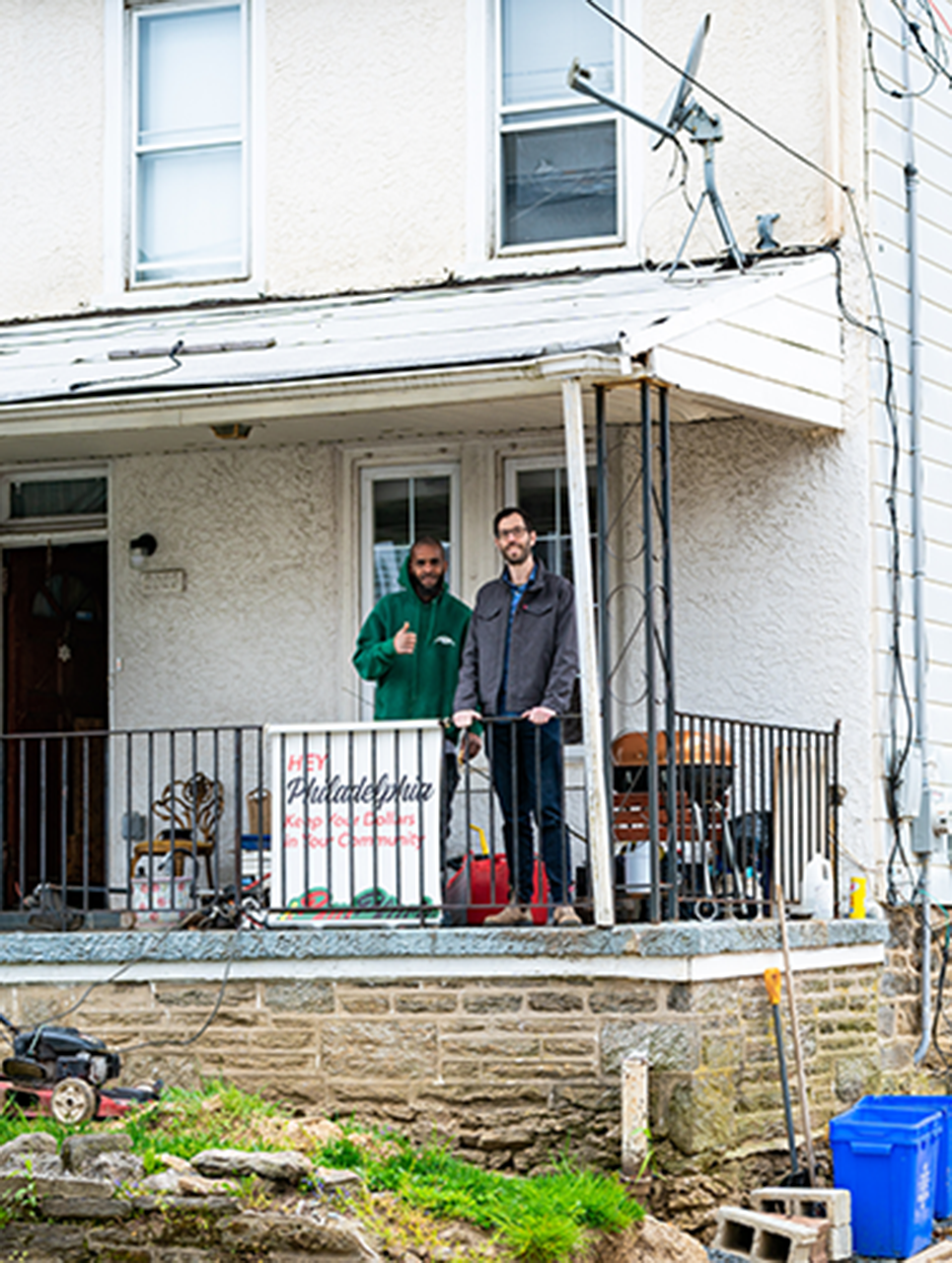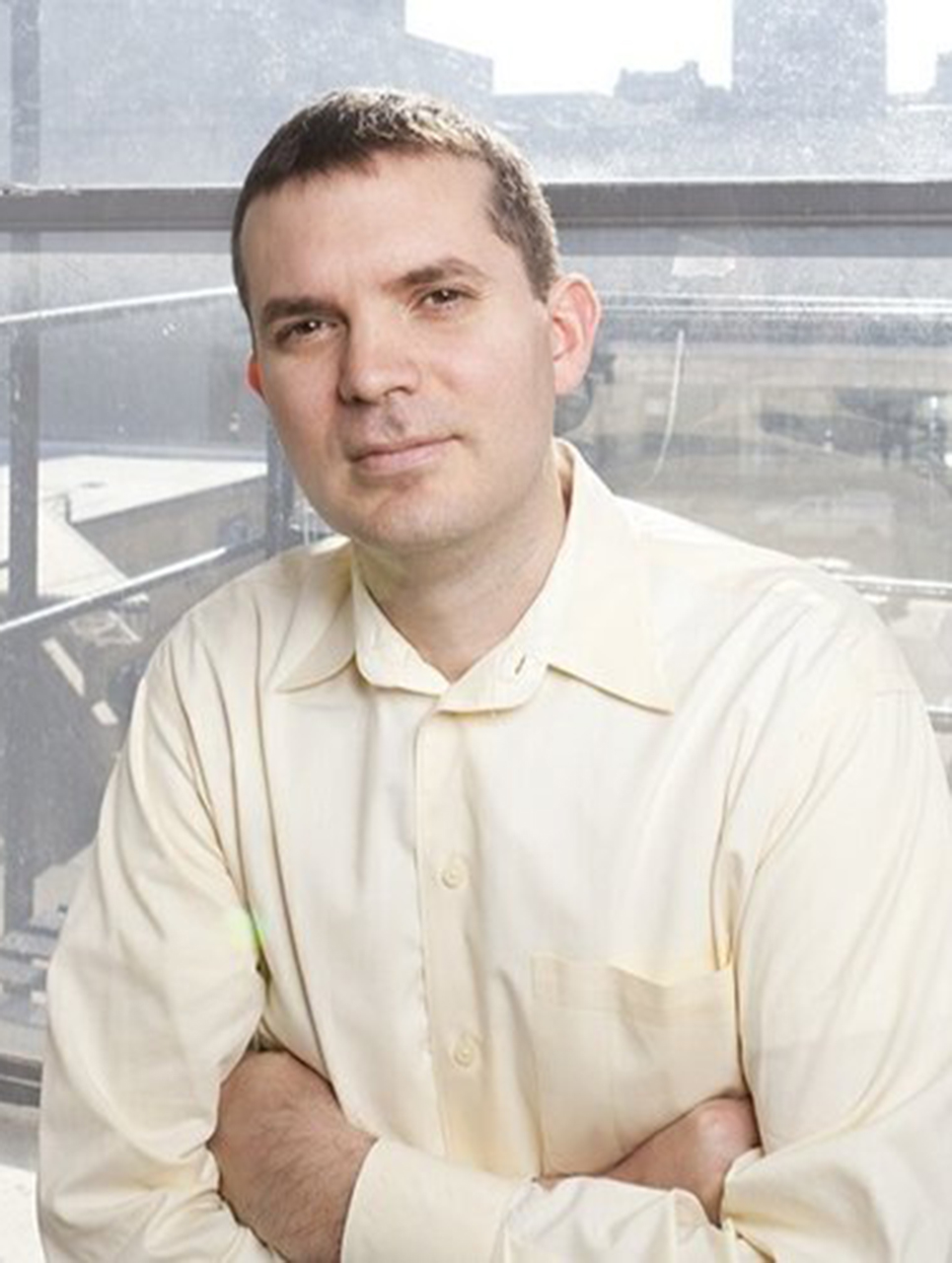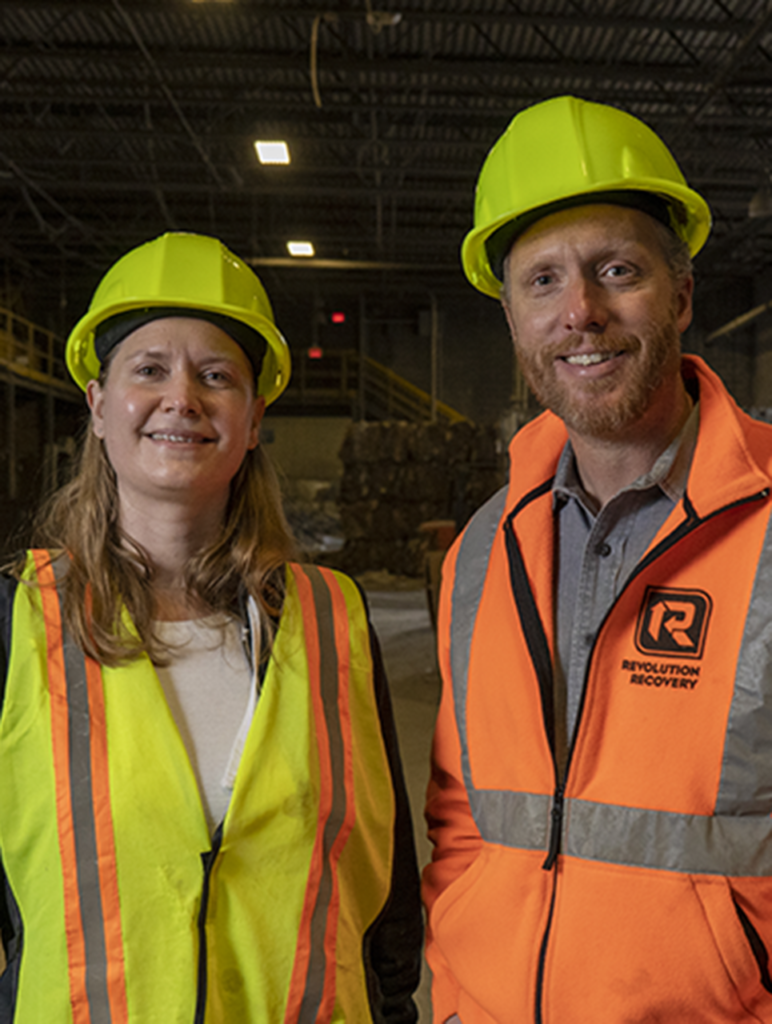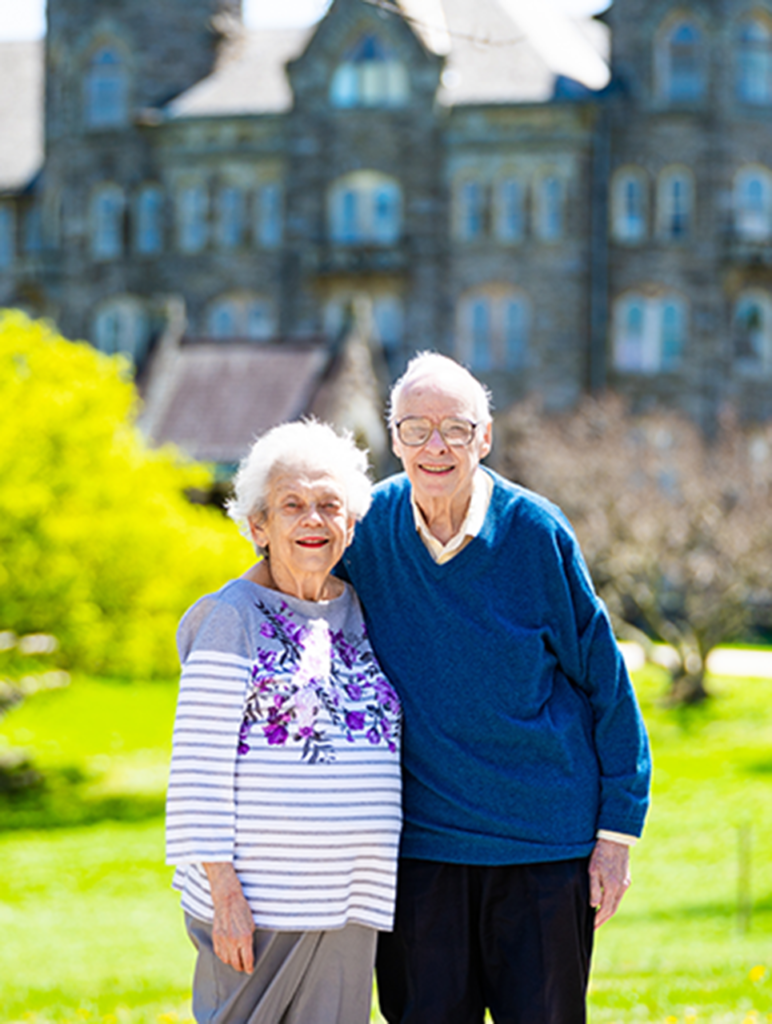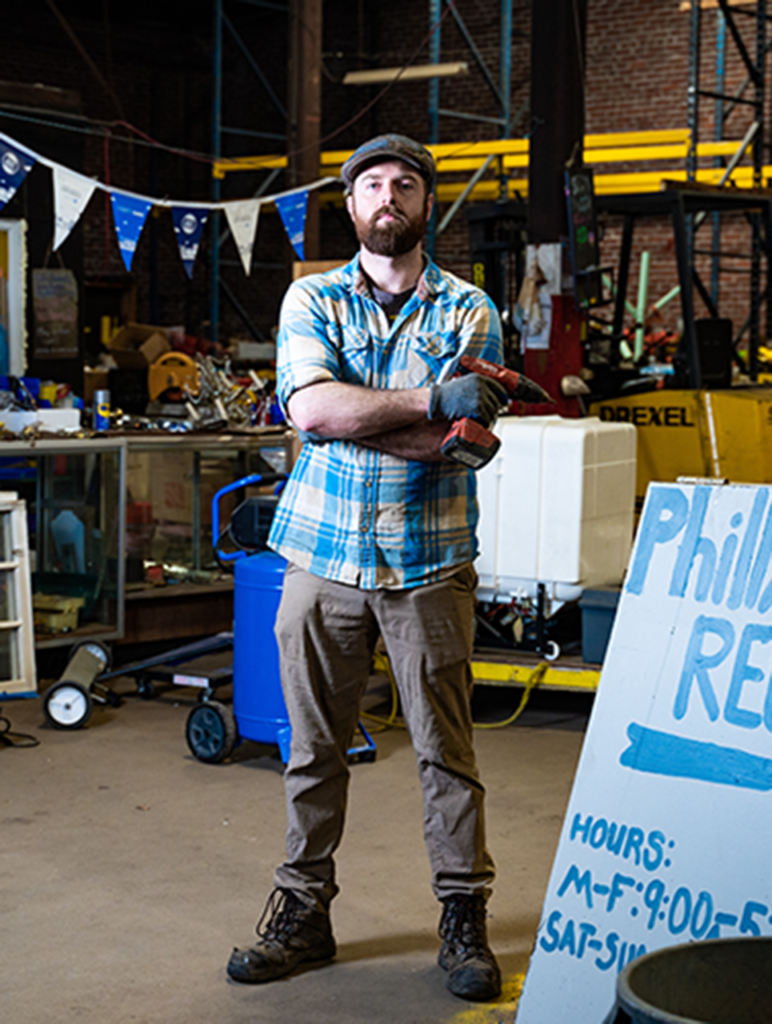Philadelphia’s built environment is responsible for about 70% of its carbon footprint, making it a key sector to tackle in order to meet climate goals. Building new, efficient buildings is part of the solution, but experts say there’s a practical need to work with buildings that already exist, a large percentage of which are individual homes.
“Housing is an enormously intersectional issue,” says Rabbi Julie Greenberg of POWER Interfaith, which she describes as a “multi-faith, multi-racial organizing force in the state of Pennsylvania for racial and economic justice for a livable planet.”
According to Greenberg, retrofitting housing is one of the biggest challenges for reaching energy efficiency targets and one that’s key to addressing climate change through a climate justice framework—important, as Philadelphia ranks fourth in the lower 48 states for highest energy burden on low-income households, an issue that disproportionately impacts communities of color.
Greenberg is encouraged by programs like the Philadelphia Energy Authority (PEA) Built to Last and State Senator Nikil Saval’s Whole-Home Repairs Act, which was introduced at the end of March. Both propose methods to streamline home repair, weatherization and electrification by leveraging existing programs and funding while creating quality jobs and workforce training opportunities.
Greenberg is clear that doing this work is going to be a huge undertaking. “In order for Philadelphia to meet its democratically chosen decarbonization goals by 2050, we need to make a massive, adaptive, complex change,” says Greenberg. “It’s not an easy lift.”
Over the past several years, the Office of Sustainability has been focused on improving the energy performance of larger, commercial buildings, instituting an energy benchmarking program designed to help building owners both reduce their energy use and save money and, more recently, the Building Energy Performance Policy, one of the first mandates for energy reduction requiring compliance for large nonresidential buildings.
“One of the things we’re pivoting to now and want to focus on is the residential piece,” says Christine Knapp, the director of the Office of Sustainability. “It’s just so much harder because there are 600,000 single family homes versus 3,000 to 5,000 big buildings.”
Climate change means Philadelphia’s future will be a lot hotter and wetter, with more frequent heat waves and more severe storms that will cause damage and flooding. That’s a real health and safety issue for people living in housing that leaks, floods or that can’t be efficiently heated and cooled.
“There are a lot of programs and policies that are trying to address the problem, but they often don’t work in coordination with one another,” says Knapp.
Waitlists for existing programs are comically long, and when issues are interrelated, it’s crucial that they be addressed holistically.
The Whole-Home Repairs Act (Senate Bill 1135) is a bipartisan bill co-sponsored by Saval, whose district includes parts of Philadelphia. Aging housing stock, displacement and energy burdens for homeowners and renters are major issues in Pennsylvania overall, and Saval’s office estimates that about 280,000 homes across the state are in serious need of repair.
“That can be connected to an overall cycle of displacement and gentrification,” says Saval. “If people who are unable to make repairs to their homes, or energy efficiency improvements to lower their utility bills, [they] may end up losing their homes to disrepair or just the sheer cost of upkeep.” Adding to the urgency is the fact that displacement is often followed by demolition, he says, which expends additional energy, wastes reusable materials and eliminates affordable housing.
“All of that fuels our climate crisis.”
The act would create a “one-stop shop” for home repair and weatherization and create a fund to provide grants of up to $50,000 for homeowners and small-scale landlords for repairs, hire staff to facilitate applicant access to different programs, and provide stipends and funding to support workforce development and improve retention.
The bill would also benefit renters.
It’s estimated that about 75% of affordable housing comes from privately-owned, unsubsidized rentals. That means that when landlords are unable or unwilling to make repairs to their buildings, they cause energy burdens and health hazards for tenants. Through the act, smaller landlords would qualify for grants as long as they sign on to maintain affordability requirements.
In a policy hearing held earlier this month, Aimena Lipscomb, a tenant living in Mount Airy, testified in support of the bill “on behalf of Black Philadelphians, especially women, who are continuously disregarded within the city and state.” Lipscomb recounted a series of maintenance issues that made her bedroom uninhabitable, her utility bills skyrocket and forced her to sleep on her couch for more than six months. “I pray for a resolution that includes open access to resources, a streamlined application process and vetting process for landlords and dedicated advocacy for those who feel trapped in a system that … does not support tenants and elders of our community,” Lipscomb concluded.
So far, the bill has received bipartisan support. Saval says they would aim to repair around 10,000 homes per year.
The concept behind this potential law is remarkably similar to the Built to Last program. Over the past several months, PEA director of residential programs Alon Abramson has been overseeing a 50-home pilot project that’s providing critical insight likely to inform the Whole-Home Repairs approach, should the act pass.

Central to Built to Last is reducing homeowners’ energy burdens through weatherization and system upgrades with minimal disruption, allowing residents to remain in their homes during the process.
Weatherization and air tightening are key to improving building energy performance. When starting from scratch or doing deep retrofits (when a space can be stripped down to the studs), remarkable performance can be achieved. The Passive House standard represents the high end of the spectrum, where buildings are made to be so airtight that virtually no natural air circulation occurs. Achieving such a seal in existing buildings requires near total replacement of doors and windows plus intrusive sealing measures to the building envelope, all drastically increasing costs.
Retrofitting to that extreme is simply not feasible for Built to Last, but Abramson says that the program can still provide a significant improvement for homeowners.
“We’re finding that our approach to the challenge is sound, but standard weatherization is not getting us as far as we had hoped,” says Abramson. “Basically, envelope sealing on a Philadelphia row home that’s occupied is incredibly challenging.”
“We’re trying to figure out how far we can go given the constraints and being minimally disruptive,” he says. “We’re exploring what work can be done now, and what might be done later, even at point of sale … We’re having to embrace the reality that we will not be able to get to incredibly high levels of performance for all of our properties.”
Deeper retrofitting could work well for an entity like the housing authority, he said, which owns properties and could make improvements when units are unoccupied.
At this point, Abramson says they’ve begun work on about 20 homes. The first priority is stabilizing the home and addressing any major deferred maintenance that might impact energy performance; next is weatherizing and basic air tightening; and the final step is converting the home to electric, if and when feasible, and adding solar panels to further offset the cost.
This isn’t a $2 million problem. It’s more like a $500 million dollar problem in Philly alone.”
— Alon Abramson, Director of Residential Programs at the Philadelphia Energy Authority
Though the pilot was initially estimated to cost about $60,000 per home, unforeseen complications—including inflation, supply chain issues and rising labor costs—mean that average costs have come out a bit higher. But just because it’s challenging doesn’t mean the approach isn’t viable. “I think we can continue iterating our approach to come up with solutions that are cost effective that will get us closer and closer to maximizing energy performance,” Abramson says.
Implementing the pilot is a start, but scaling it to address Philadelphia’s roughly 60,000 low-income homeowner-occupied houses is the next hurdle.
“This isn’t a $2 million problem,” Abramson explains. “It’s more like a $500 million dollar problem in Philly alone.”
According to data gathered by the Healthy Rowhouse Project, 70% of all housing units in the city are row houses and 75% of those are over 50 years old. That means that
understanding how to best repair, weatherize and electrify older row houses at maximal efficiency is critical to meeting climate goals.
Ideally, total electrification and solarization are part of the package, so that homeowners aren’t stuck using more costly, dirty energy in the future, but Abramson says that currently there isn’t an electrification funding source.
“We would love to see some federal support if we were really going to move on electrification, especially for low-income households that would require subsidies,” he says, “but that goes beyond the home and requires grid updates.”
With regard to climate change, one of our biggest challenges is retrofitting the existing built environment.”
— Erica Avrami, Assistant Professor of Historic Preservation at Columbia University
Unfortunately, at least in the academic sector, there hasn’t been much research on how to pragmatically retrofit existing buildings.
As Erica Avrami, assistant professor of historic preservation at Columbia University points out, in the academic realm, dominant architecture programs are teaching new design. On the other hand, the much smaller and less influential preservation programs tend to focus on places of heritage value and their associated narratives.
“With regard to climate change, one of our biggest challenges is retrofitting the existing built environment,” says Avrami. “There is a huge gap in professional education between historic preservation, which focuses on a subset of significant buildings, and architecture, which focuses on designing new structures.”
Historically, she believes, the preservation field has mostly aligned itself with sustainability as a convenient means of advancing its heritage goals. The famous adage by Carl Elefante that “the greenest building is the one that’s already built” lacks context and narrowly focuses on the energy embodied in building materials alone—an important component, but one that doesn’t acknowledge operational energy or building lifecycle upgrades.
Avrami’s research about preservation and sustainability is timely as it has drawn attention to the issue of energy code exemptions for historic buildings at a time when new greenhouse gas regulations may no longer honor them. In most cities, older buildings that meet certain eligibility criteria have been exempt from more stringent energy standards since the 1970s.
Those exemptions, Avrami’s research shows, can be traced back to one questionable study on operating energy.
“They cherry-picked the data,” she says, “because preservationists at that time weren’t seeking policy reform, they were interested in rationalizing the importance of older buildings and maintaining the policy status quo.”
Avrami recalls that at the same time preservation was making the case for special exemptions, incentives for solar energy were proliferating as a result of the oil embargo.
“Preservationists could have forged important research and new practices at that moment,” she says, “but then oil got cheap and energy consumption was less of a national imperative. The energy code waivers afforded historic buildings meant preservationists didn’t have to prioritize energy efficiency for decades.”
But, she believes there is hope.
“With the climate crisis and newly-emerging greenhouse gas laws,” she says, “that is changing.”
As cities adopt bolder mandates, the onus will land on building owners to meet them, which is why programs like Built to Last and Whole-Home Repairs are so important. They provide the needed incentives and financial support for property owners who couldn’t otherwise afford retrofitting, while also refining a practical approach to a complex endeavor.
“There are exceptional leaders within the city agencies who are doing everything they can to move these changes forward in a way that works for all the stakeholders,” says Greenberg. “Philadelphia programs are going to need to be well-funded and brought to scale.”

